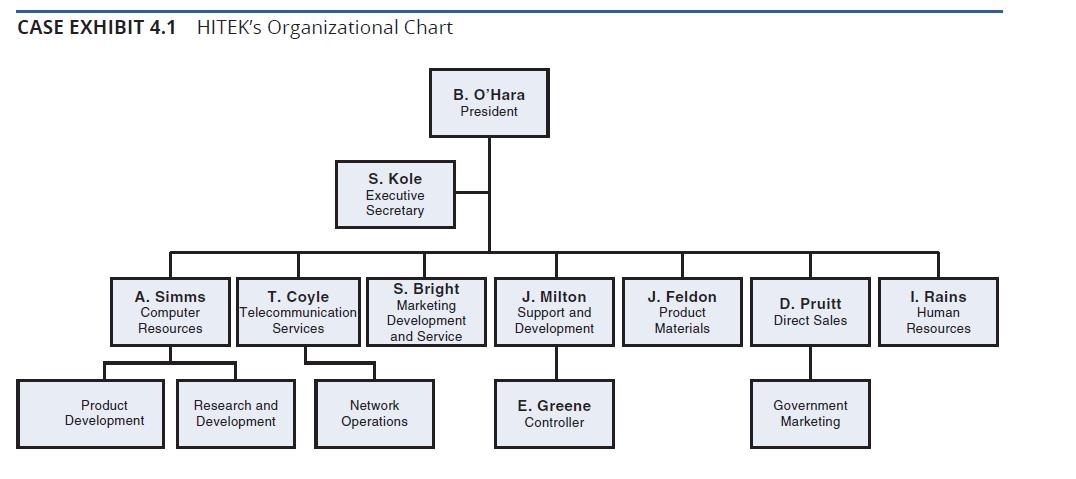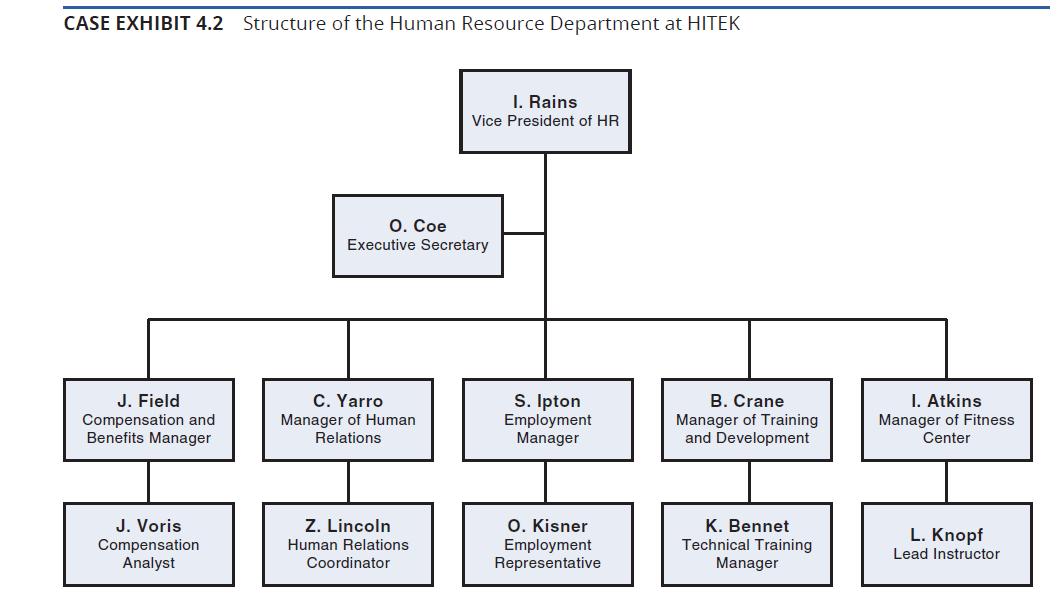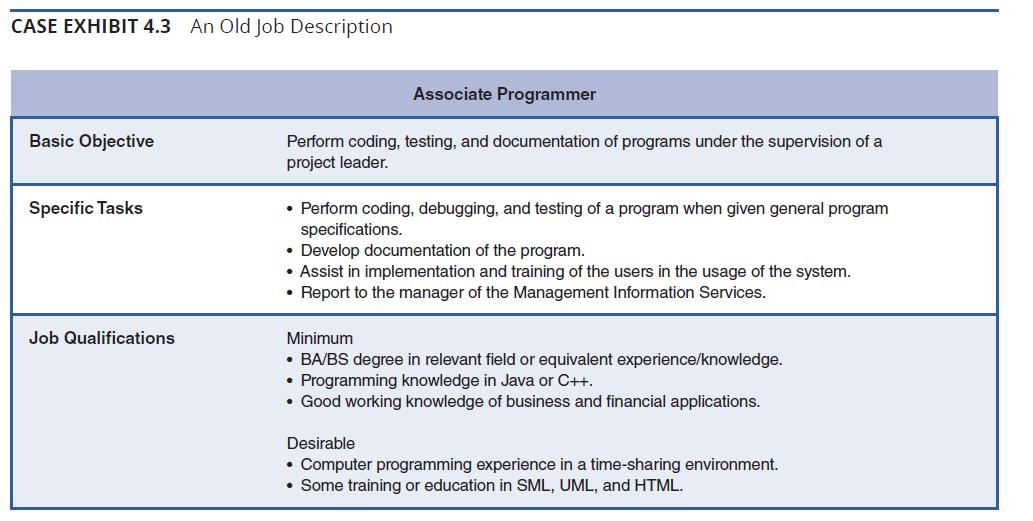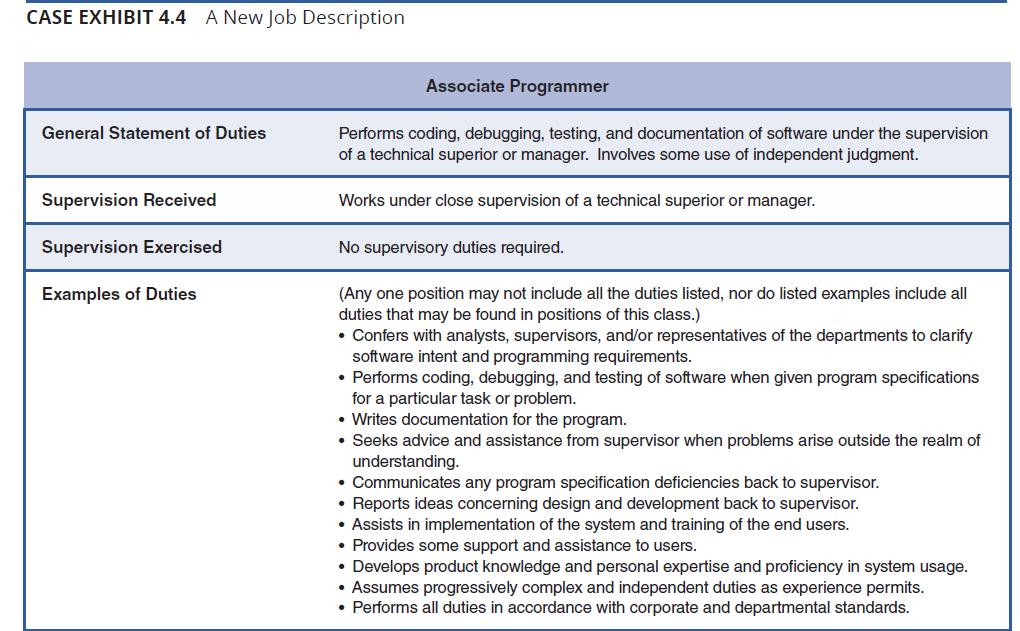Jennifer Hill was excited about joining HITEK Information Services after receiving her bachelor of arts degree. Her
Question:
Jennifer Hill was excited about joining HITEK Information Services after receiving her bachelor of arts degree. Her job involved examining compensation practices, and her first assignment was to review HITEK’s job descriptions. She was to document her work and make recommended changes, which would include reducing more than 600 job descriptions to a manageable number.
BACKGROUND
To its stockholders and the rest of the outside world, HITEK is a highly profitable, highly aggressive company in the computer business. In addition to its numerous government contracts, it provides software and hardware to businesses and individuals. From its inception in the late 1970s, it has maintained its position on the leading edge by remaining flexible and adaptable to the turbulent environment in which it operates. It’s a people-
intensive organization that relies enormously on its human resources; therefore, it’s in HITEK’s best interests to establish policies and procedures that nurture productivity and enhance the satisfaction of its employees.
Because the computer industry is growing at an incredible pace, opportunities for placement are abundant, and the competition for high-quality human resources is tremendous.
HITEK has grown about 30% in the last 3 years, and its management knows that, as easily as it attracts new employees, it can lose them. Its 14% turnover rate is about average for its industry.
HITEK remains relatively small at 1,000 employees, and it prides itself on its small-team company culture. This culture is maintained partly by extensive use of the company’s Intranet and by the utilization of open office spaces. The relatively flat, lean organizational structure (shown in Case Exhibit 4.1) and the easy accessibility of all corporate levels also support an open-door policy. All in all, employees enjoy working for HITEK, and management is in touch with the organization’s pulse.
With the notable exception of the HR department, there are few rules at HITEK. In other departments, employees at all levels share the work, and positions are redefined to match the specific competencies and the interests of the incumbent so that “overqualified” and “overachieving” individuals are often hired but are then promoted rapidly. Nothing is written down; if newcomers want to know why something is done a certain way, they must ask the person(s) who created the procedure. There is extensive horizontal linkage between departments, perpetuating the blurring of distinctions between departments.
The HR department stands in stark contrast to the rest of HITEK. About 30 people are employed in the department, including the support staff members, or about one HR employee per 33 HITEK employees. The vice president for human resources, Isabel Rains, rules the department with an iron fist. Employees are careful to mold their ideas to match Rains’s perspective.
When newcomers suggest changes, they’re told, “This is the way things have always been done because it’s our culture.” Written rules and standard operating procedures guide all behavior.
Department employees know their own job descriptions well, and there is little overlap in their duties.
With the exception of one recruiter, all 12 of the incumbents whose positions are represented in Case Exhibit 4.2 are women. Only half of them have degrees in industrial relations or HRM, and only one fourth have related experience with another company. Most of them have been promoted from clerical positions. In fact, some employees view the vice president position as a “gift” that was given to Isabel, a former executive secretary, the day after she received her bachelor’s degree from a local college. In other departments, it’s widely believed that gaining professional degrees and related experience leads to expertise.
One incident that conveyed the department’s image to Jennifer Hill occurred during her second week on the job. While preparing a job description with Dave Pruitt, Jennifer explained that she would submit the job description to Janet Voris for final approval. Dave became confused and asked, “But Janet is only a clerical person; why would she be involved?”
JENNIFER HILL’S DUTIES
At HITEK, the pool of job descriptions had grown almost daily as newcomers were hired, but many of the old job descriptions were not discarded, even when obsolete. Other job descriptions needed updating. Jennifer spent some time thinking about how to proceed. She considered the uses of the job descriptions and what steps she would need to take to accomplish all that was expected of her. Support from within the department was scarce because other employees were busy gathering materials for the annual review of HITEK’s hiring, promotion, and development practices conducted by the Equal Employment Opportunity Commission.
After 6 harried months on the job and much frustration, Jennifer had revised all the descriptions that were still needed (examples of “old” and “new” job descriptions appear in Case Exhibits 4.3 and 4.4). She was also beginning to develop some strong opinions about how the HR department functioned at HITEK and what needed to be done to improve its effectiveness and its image. She also determined that the department was not using metrics and analytics effectively. She decided to arrange a confidential lunch with Billy O’Hara, HITEK’s president.
CASE QUESTIONS
1. Based on what you know about high-tech companies, what are some likely strategic objectives for HITEK? Given these, what should be the objectives of HITEK’s HR department? Do you think these are the objectives that guide the behaviors of Isabel Rains? Explain.
2. Jobs change frequently at HITEK. What approach to job analysis makes the most sense in such a fast-changing environment? Customized? Standardized? Task focused?
Competency modeling? Evaluate the strengths and weaknesses of the alternative approaches and make recommendations to Jennifer about how to proceed.
3. Is the new job description (Case Exhibit 4.4) better than the old one (Case Exhibit 4.3)? Why or why not? Consider the perspective of employees as well as the perspective of the person supervising this job. Does your answer change depending on the way the job description is being used?

Step by Step Answer:

Managing Human Resources
ISBN: 978-8522104291
12th Edition
Authors: Susan E Jackson, Randall S Schuler, Steve Werner





